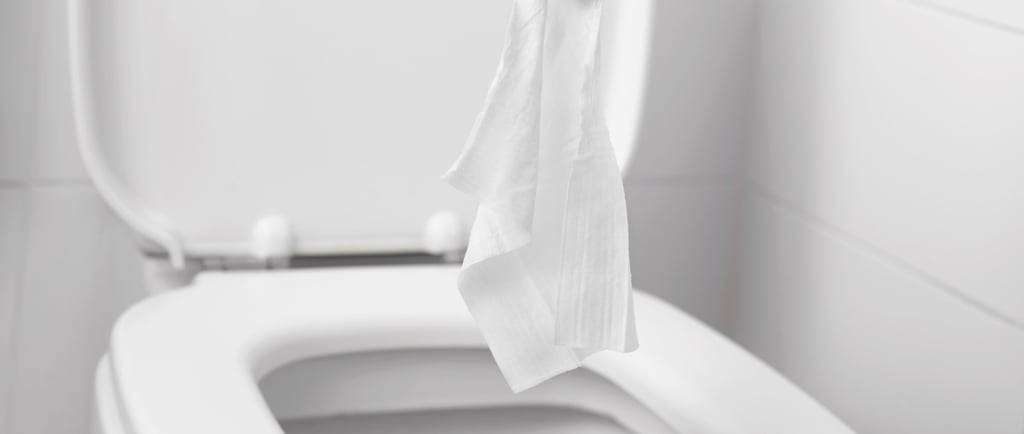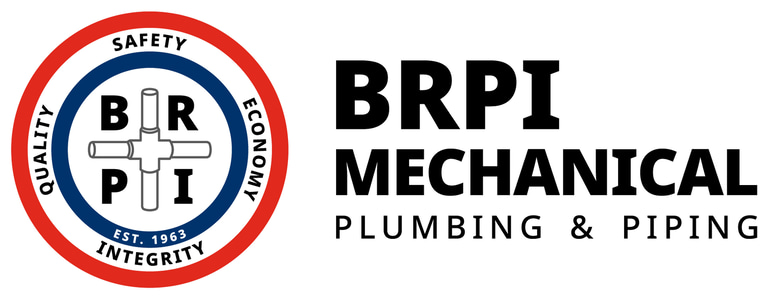Myth-Busting: Is Flushing Wet Wipes Ever Okay?
FAQSRESIDENTIAL PLUMBINGPREVENTIVE PLUMBING TIPS
7/30/20254 min read


🚽 Let’s Cut the Crap (Literally): The Truth About “Flushable” Wipes
If you’ve ever stared at a pack of “flushable” wet wipes and thought, It says flushable, so it must be fine, you’re not alone—and you’re definitely not off the hook. The myth of the magical disappearing wipe has fooled millions, and the results are ugly: slow drains, clogged pipes, and even full-blown raw sewage creeping back into homes.
Sounds dramatic? Good. It is.
This isn’t just a plumber's overreaction. It’s an all-too-real problem that homeowners in the Salt Lake Valley (and beyond) are facing every day. So buckle up, because we’re diving deep into the swirl of misinformation and surfacing with the truth—before it’s too late for your pipes.
🧻 Wipe Away the Lies: What “Flushable” Really Means
First things first: flushable doesn’t mean disintegrates like toilet paper.
Most wet wipes are made with synthetic materials like polyester or polypropylene—yep, the same stuff in outdoor furniture and yoga pants. These fibers don’t break down in water. Ever. So when you flush them, they don’t gracefully float off to the magical sewer kingdom. They hang around. They twist. They tangle. They party with your other plumbing debris like hair, grease, and whatever your toddler flushed last week.
And while TP turns to mush faster than you can say “backflow,” wipes just…linger.
A 2019 study by Ryerson University in Toronto tested 101 single-use wipes labeled “flushable.” Not a single one passed a flushability test that mimicked real-life conditions.
Let that sink in. Not. One.
🌀 From Flush to Fiasco: The Journey of a Wet Wipe
You hit flush. Whoosh. It’s gone. Or is it?
Here's what actually happens:
It enters your home’s plumbing.
If you’re lucky, the wipe snakes through your toilet trap and makes it to the main line. If not, congrats! You've just earned yourself a clogged toilet—and a very awkward call to your plumber.It travels to the lateral sewer line.
This is where the wipe’s true villain arc begins. It may get snagged on a tiny rough edge, join forces with grease and food bits, and form a disgusting little blob we in the biz call a “rag ball.” It grows. It festers.It reaches the city sewer—or doesn’t.
If your plumbing is older (looking at you, Sugar House and Liberty Wells homes), the wipe might never make it out. Tree root intrusion? Cracked clay pipes? Your wipe just found its forever home.It clogs up pumps and treatment plants.
Even if your home’s plumbing somehow survives, municipal systems suffer. In Salt Lake City alone, wipes have caused massive headaches for wastewater treatment facilities. Clogged pumps, broken machinery, and costly repairs—all thanks to “flushable” wipes.
🧠 The Big Con: Why They're Labeled Flushable in the First Place
This is where things get sneaky.
There’s no federal regulation for what qualifies as “flushable.” That’s right—companies can slap that word on the packaging with zero obligation to prove anything. It’s marketing smoke and mirrors. And people fall for it all the time.
Some manufacturers are pushing for testing standards (because they want to look good), but others are fighting it. Why? Because actual flushability tests would obliterate their claims faster than a wipe hits a sump pump blade.
So no, those wipes weren’t approved by the sewer gods. They were approved by the marketing department.
💸 Your Wipes, Your Wallet: What This Really Costs You
Here’s what most homeowners don’t realize: fixing a wipe-induced clog isn't just annoying—it’s expensive.
Snaking a backed-up toilet? That’ll run you around $200. But if the clog is deeper—say, in the main sewer line? You’re looking at $800 to $1,500. If the pipe needs digging or replacement? Buckle up for $5,000–$10,000.
And nope, your homeowners insurance probably won’t cover it—especially if the cause is “non-flushable items flushed.” Yes, they check.
So, while those wipes may feel convenient now, flushing them is like tossing $20 bills straight into your toilet.
Not so “disposable” after all.
💡 But I Only Flush One or Two at a Time…
Doesn’t matter. Even one wipe can start a chain reaction. They don’t dissolve, so they linger and accumulate. Like a bad houseguest that invites friends and never leaves.
And don't get us started on baby wipes or makeup remover wipes. Those are even less breakable and more destructive. It’s like flushing denim.
🔧 What You Should Do Instead
Let’s get practical. You don’t have to give up that fresh-wipe feeling—we’re not monsters. But if you want to keep your pipes clean and your plumber visits minimal, here’s the game plan:
Use toilet paper only. The good stuff. Septic-safe. Double-ply, if you’re feeling fancy.
Toss wipes in the trash. Yes, even if they say “flushable.” Keep a small covered bin in the bathroom. Line it with a bag if you want to avoid the ick.
Educate your household. Especially kids and guests. Stick a sign near the toilet if needed. You’d be surprised what people try to flush.
🛑 Red Flag Flushes: What Else Doesn’t Belong in Your Toilet
While we’re here, let’s bust a few more myths. These things are not toilet-friendly—ever:
Paper towels
Tissues
Q-tips
Tampons or pads
Cotton balls
Dental floss
Hair
Cat litter
Grease (we’re begging you!)
If it’s not toilet paper or your bodily business, don’t flush it. End of story.
🧼 Still Not Convinced? Try This: The Jar Test
Here’s a fun (and mildly gross) experiment. Drop a couple squares of toilet paper and a “flushable” wipe into two separate jars of water. Shake both. Wait 10 minutes.
The toilet paper? It turns to mush. The wipe? Still intact, smug as ever.
Now imagine that wipe hanging out in your pipes for the next three years.
🎯 Bottom Line: Flush Smart or Pay the Price
If you want to keep your plumbing clear, your sewer line flowing, and your wallet blissfully unbothered, treat wet wipes like you treat glitter: great in theory, an absolute menace in practice.
Despite the branding, the truth is crystal clear—flushing wet wipes is never okay.
Unless you’re trying to summon a $5,000 plumbing bill, in which case…carry on.
Contact
Main Office
Social
3560 S 2200 W
West Valley City, UT 84119
P.O. Box 25123
Salt Lake City, UT 84125
Monday – Friday:
7:00 am – 3:30 pm
Billing & Mailing Address
Hours
© Budd M. Rich Plumbing Company, DBA BRPI Mechanical. All rights reserved.
